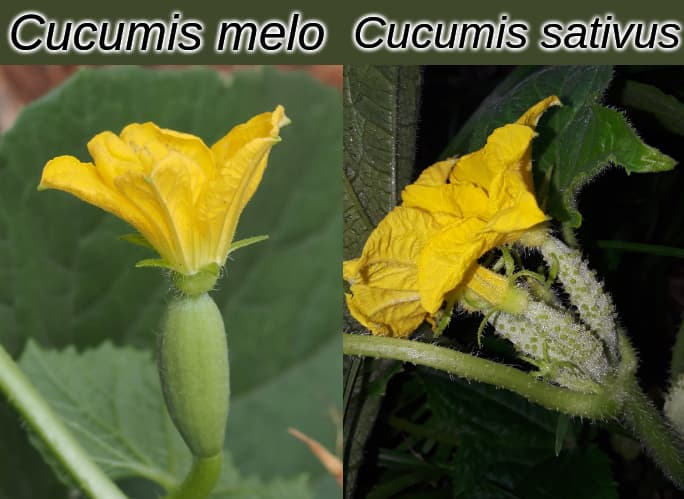Why stop at 3 species, lets include C. ficifolia & C. angyrosperma & make a 5 way species cross. I’m convinced All Cucurbita Species are cross-compatible with Mentor Pollination & Thorough Introgression to get pass F1 sterility.
I keep debating with myself if C. lundelliana is necessary or not, cuz I have no C. lundelliana but have lots of diversity among all the 5 cultivated species & wondering if I’ve captured enough diversity to cross everything together as a Landrace.
I plan to make the initial interspecies crosses via Mentor Pollination by tricking Female flowers into accepting forign species pollen as to not reject it’s own. For example I take C. pepo pollen, mix it with C. moschata pollen then apply the mix to both C. maxima & C. moschata female flowers. This forces the C. pepo to accept C. maxima pollen as to not reject C. pepo pollen. I successfully got C. maxima flowers pollinated by C. pepo pollen like this, sadly someone cut the fruit off because I was doing it on suburban/urban land I don’t own (Not having land really holds my breeding experiments back  ). Like you said Landraces will have a leg up because the genetic mixing is automatically more Genetically plastid. Reguardless after mentor Pollination, some seeds inside the fruit will be pure C. pepo but others will be C. maxima x C. pepo. If you’re really good at Squash species ID, spotting the Hybridized seeds inside the fruit may be possible becuase even tho Seedcoats are Mother/Maternal Material, the Embyro inside is half & half, meaning pollen can affect embyro size thus effecting the size of the seeds. For example if my C. pepo has tiny seeds & my C. maxima has huge seeds, it would be easier to spot the size difference even if all the seedcoats are the same.
). Like you said Landraces will have a leg up because the genetic mixing is automatically more Genetically plastid. Reguardless after mentor Pollination, some seeds inside the fruit will be pure C. pepo but others will be C. maxima x C. pepo. If you’re really good at Squash species ID, spotting the Hybridized seeds inside the fruit may be possible becuase even tho Seedcoats are Mother/Maternal Material, the Embyro inside is half & half, meaning pollen can affect embyro size thus effecting the size of the seeds. For example if my C. pepo has tiny seeds & my C. maxima has huge seeds, it would be easier to spot the size difference even if all the seedcoats are the same.
Now getting past F1 is the problem most people get stuck on. This happens because of a lack of Introgression. To get pass the sterile F1 Stage, requires both Parent Species that made the Hybrid Offspring be Present to cross with it’s hybrid offspring (It isn’t capable of crossing because the genetics aren’t thoroughly mixed yet, much like how 1 swirl in cooking a cake doesn’t mix the ingredients well). Basically repeat the Mentor Pollination Process, Mix Both parent species pollens as well as the Hybrid Offspring pollen & than Pollinate all Female Flowers (Cuz some directions work better than others, do them all for maximum success). Do this each generation until the species all introgress into 1 species. This is how the Cucurbita pepo we know & love was made, it actually use to be 2 seperate species (Cucurbita pepo & Cucurbita texana) that were introgressed together thru an ancient hybrid swarm event (It was actually domesticated twice). You can still sometimes see the 2 subspecies by the penduncle. Remember, these traits are all fluid, in fact all Squash Species ID traits are fluid.
The Interspecies Squash cultivar Honeynut (C. maxima x C. moschata) Was stabelized thru many introgressions like this. That’s why it’s able to pollinate it self reliable & make True Seed. This wouldn’t have been possible without both species being present during getting past F1 sterlity. Lots of Seed sellers still make the mistake of Labelling them as Pure C. moschata and I can’t fault them, it’s mostly C. moschata genetics (Roughly 80% C. moschata & 20% C. maxima).
Among the Cultivated Squash, Cucurbita ficifolia has the least genetic Diversity, no wonder they all kind of look the same. I say this because this is how Rhizowen got the Orange Trait into C. ficifolia.
I strongly suspect the reason he couldn’t get pass F1 Sterlity is due lack of introgression. This is a cross I want to recreate & learn from his mistakes.
Here’s the link to his C. maxima x C. ficifolia Blog Post :
I think you’ll find this Cucurbita Squash Phylogenic Tree useful. What’s interesting is the inbetween Position of C. lundelliana.
I also wonder if a 5 species Squash Landrace could also cross with other closely related genera like Peponopsis. Intergeneric Hybridization would be fun to explore!
















